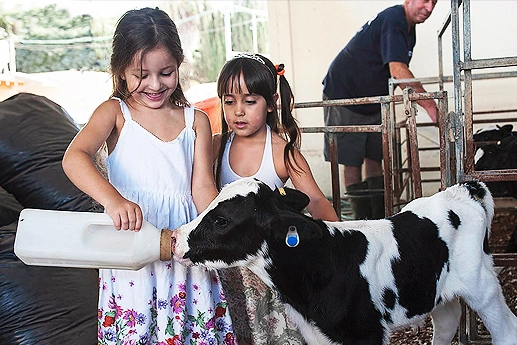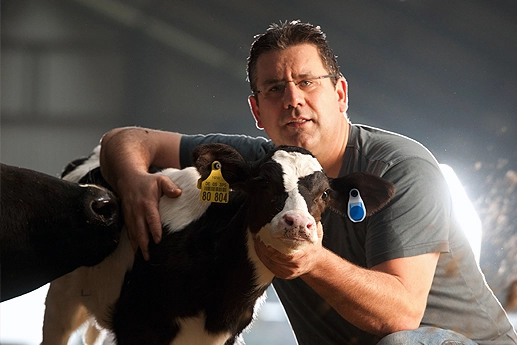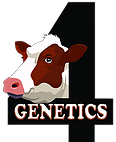Young livestock monitoring systems


As the future of the dairy herd, calves are extremely important. But they don’t come without their challenges. When compared with the rest of the herd, the dairy calf is the most susceptible animal on the farm – with the highest mortality and morbidity rates.
Unfortunately, calves face many risks early in life, which can increase the likelihood of diseases and disorders. This is complicated further, as it’s impossible to detect all health problems through simple observation. Even a well-trained employee will detect only 55% of claves health events in the herd, and therefore, won’t be able to provide them with the necessary care.
Calves undergo many stressful periods and dramatic shifts. And, surprisingly, the calf stage of the dairy lifecycle has the fewest routinely-collected key performance indicators. So, there is a strong indication that calf health and growth failure fall in the absence of data. Unlike the naked eye, young livestock monitoring systems can detect up to 85% of health events, even ahead of clinical signs.
Morbidity and mortality are highly correlated. Therefore, maintaining healthy calves during the pre-weaning period is essential to reduce overall mortality rates. Here’s how young livestock monitoring systems can help.
Suckling Indicators:
Suckling is crucial in calves as it induces the release of digestive hormones. This highly-motivated behavior is divided into; nutritive, in which the calf is ingesting milk, and non-nutritive, where the calf is simply suckling on an empty teat, another object, or is cross-suckling. Cross-suckling can be detrimental to a calf’s health and an indicator of disease.
Through continuous measuring, young livestock monitoring systems observe the amount and timing of cross-suckling a calf performs, and detect critical aspects of care that may be causing the behavior, like, milk delivery times and method, or any unfulfilled behavioral needs.
From this data, dairy farmers can create more optimal management practices, which promote normal development, reduce undesirable behaviors, provide the herd with updated care tactics, and prevent diseases.
Rumination Development:
When rumination first develops, solid feed intake is extremely low. As calves turn six to eight weeks of age, rumination time increases, as well as solid food intake.
Changes and developments in rumination can highlight any digestive tract problems or abnormalities in pre-weaned calves, that dairy farmers should be aware of.
However, monitoring each calf individually, and daily, is extremely challenging. Young livestock monitoring systems work to streamline rumination monitoring and help dairy farmers to detect any digestive problems a calf may have early on in its development.
This tool enables farmers to treat the pre-weaning calves with antibiotics at the right time and prevent any further disease or death.
Activity Monitoring:
Activity monitoring can help assess the health of pre-weaned calves. On average, healthy pre-weaned calves exhibit much sedentary behavior – up to 17-18 hours of lying down per day. When sick, calves will decrease their activity further and curl their bodies to reduce the exposed surface area.
Due to their sedentary nature, it is challenging to appreciate significant deviations from normal simply through observation. This highlights the vital benefit of automated young livestock monitoring. These systems continuously monitor and measure behavioral changes in the calves, such as activity levels. These measurements are critical in evaluating the health and wellbeing status of young calves.
Conclusion:
Young livestock monitoring is essential for managing the health and wellbeing of your herd. Through continuous measuring and monitoring, this tool detects variations from normal calf behavioral patterns and identifies any problems that may lead to disease or death.
This technology helps dairy farmers detect problems as soon as possible, to ensure the herd is healthy and disease-free.
